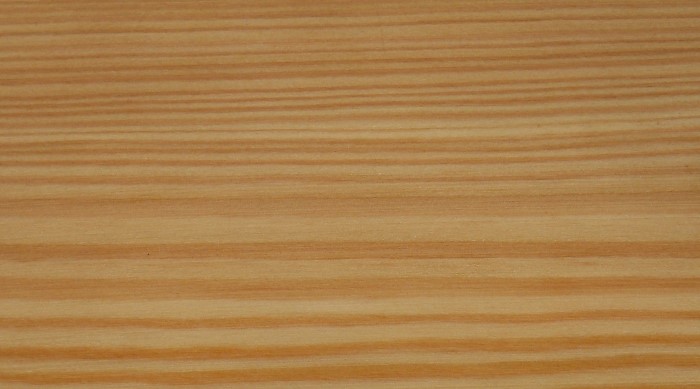Siberian Larch – Larch, Siberian
Latin name: Larix sibirica
Also known as Russian larch
Is a popular exterior joinery species which tends to be supplied from Russia and is available as a slow grown material It is important to specify slow grown Siberian larch due to various sources of Siberian Larch e.g faster grown Austrian / German forest etc.It tends to be a well-priced material in comparison to most exterior joinery timber materials used without any additional treatments e.g for exterior cladding and decking applications. Siberian Larch tends to be a resinous species with a tendency to split, shake when used in exterior applications e.g claddings.It can be very difficult to coat, paint due to resin and susceptibility to splitting etc.It is predominantly supplied as a product with character e.g knots very important if you are working on a large project request some images/samples to avoid any quality and limited supply disputes.Moisture content predominately supplied is 18% AVG.
Wood Type: Softwood
Durability: Slightly durable, Moderately durable. Service life above ground for cladding, decking applications minimum 15yrs
Treatability: Extremely difficult
Moisture Movement: Reported to be small
Density (mean, Kg/m³): 590 (Ranging from 570 to 650)
Texture: Fine
Quality: Siberian Larch is sold in the UK (Wales, Scotland, England Northern Ireland and Ireland based on the timber import grades from Russia GOST, e.g. S/F sawfalling (SF); U/S unsorted (US) I-II or S/ F, IV, I-IV saw falling including the Nordic Grading Rules A, AB ,ABC, C etc.It is important to note that there is very little unsorted I-III produced and the bulk of the stock will be S/F. It is a natural product and knots should be expected the image above is for illustration only. Other sorts or selections may be available to order e.g given in BS1186:3 1990 (Timber for and workmanship in joinery) for cladding applications
Availability: Ex Stock as a cladding and decking for prompt delivery, we keep some profiles in stock ready machined
Use(s): Cladding, Joinery – Exterior, Flooring, Decking, Deck boards, Siding, Weatherboard, Facades
Colour(s): Yellow-brown (Golden brown), Light brown, Reddish brown (Pale)
Environmental: All our stock is FSC Chain of Custody Certified
Listed in the IUCN Red List of Threatened Species as LR – Lower Risk (least concern). Not listed in CITES. Believed available from well-managed sources. Check certification status with suppliers.
Distribution: native distribution for L. sibirica extends across Siberia to Mongolia and northern China. In Siberia, it is extracted from ‘natural forest’ and most of this timber is extremely slow grown material. In the eastern part of its range it hybridises with L.gmelinii and is known as Larix x czekanowskii. L.sibirica is also grown in plantations in Austria, Norway and Finland yielding more quickly grown material. It has been introduced into Canada and the northern USA.
Siberian Larch is a medium-sized deciduous, coniferous tree ranging in size from 20m to 40m tall with a diameter of 1m or slightly more. In favourable situations, a long, clean, cylindrical bole for two-thirds of its length can be achieved.
The timber: The heartwood is pale reddish-brown to brick-red in colour, sharply defined from the narrow, lighter-coloured sapwood. It is a very resinous wood, with clearly marked annual rings. It has a straight grain, a fine, uniform texture and is rather heavy, weighing 590 kg/m³ when dried, it is likely that plantation grown L.sibirica and that grown in more southerly Europe is of lower density. Its heartwood is listed as moderately durable, and its narrow sapwood means a high proportion of heartwood can be recovered for use.
Drying: Siberian larch is difficult to dry due to its high resin content. Therefore it should be dried slowly to prevent checking and other drying defects.
It is important to note that Siberian larch has the tendency to split and shake in situ including resin exudation very evident when installed as a cladding unfinished.
Strength: Likely to be similar to European larch which is about 50% harder than Scots pine and slightly stronger in bending and toughness. The strength values for slow grown L. sibirica material are likely to be slightly higher than for faster-grown plantation sourced material.
Working qualities: Siberian larch is Similar to European larch in that it saws, machines and finishes well but it tends to split on nailing and therefore drilling is recommended particularly at board ends.
Fixings: Use Annual ring shank fixings for cladding and stainless steel as a minimum please refer to our decking fixing and cladding fixing, installation instructions guide guidelines.
Factory Finishing, coating etc: We supply Siberian larch in some factory finishes with a modern look, rustic, weathered, aged look using various factory finishes Sikkens, Linseed Oil, Ferrous Sulphate contact us for more information and samples.
Puidukoda has been very active and large supplier of siberian larch and below are some of the common issues our customers have experienced. We welcome any opportunity to help architects, specifer, building, landscape contractors and merchants who need help with working with Siberian Larch.
Common problems you find with Siberian larch supply when Siberian larch is used in cladding, decking and joinery applications;
- Misinformation on the characteristic of the species- clients expecting large volumes of clear species
- Coating and painting failure – very few external coatings work with Siberian larch due to the high resin content, high risk of splitting and shaking.
- Splitting and Shaking – tendency to split when exposed to very high temperatures in the summer months
- Movement cupping- tendency to distort very important to face fix with annular ring shanks or screws etc avoid secret fixing.
- Resin bleeding; this can be scraped off when dry or use a solvent to clean it off on unpainted/oiled timber.
- Moisture Content; especially when used to make large joinery sections as the moisture content tends to be higher than 18% and not ideal for internal applications.
Please contact us for your siberian larch requirements or to discuss your project.

